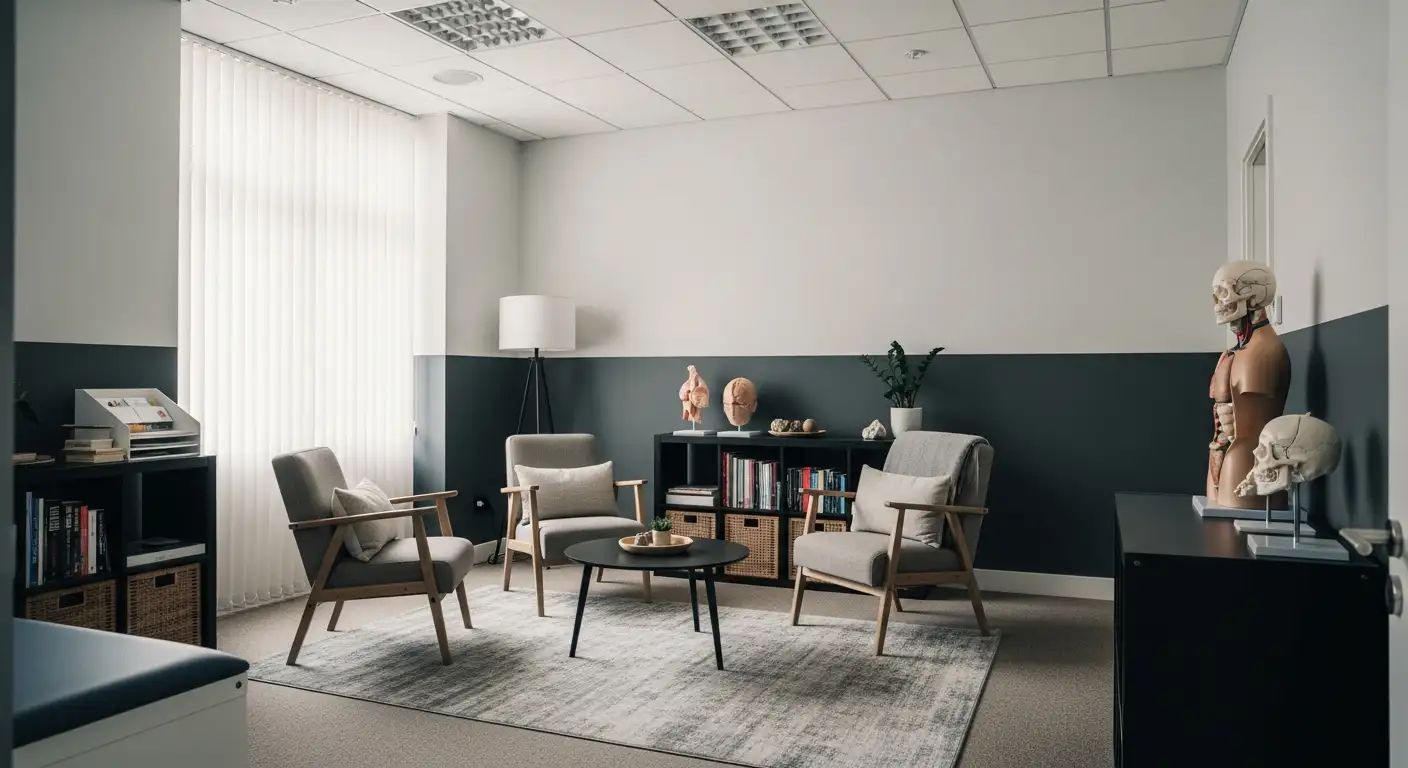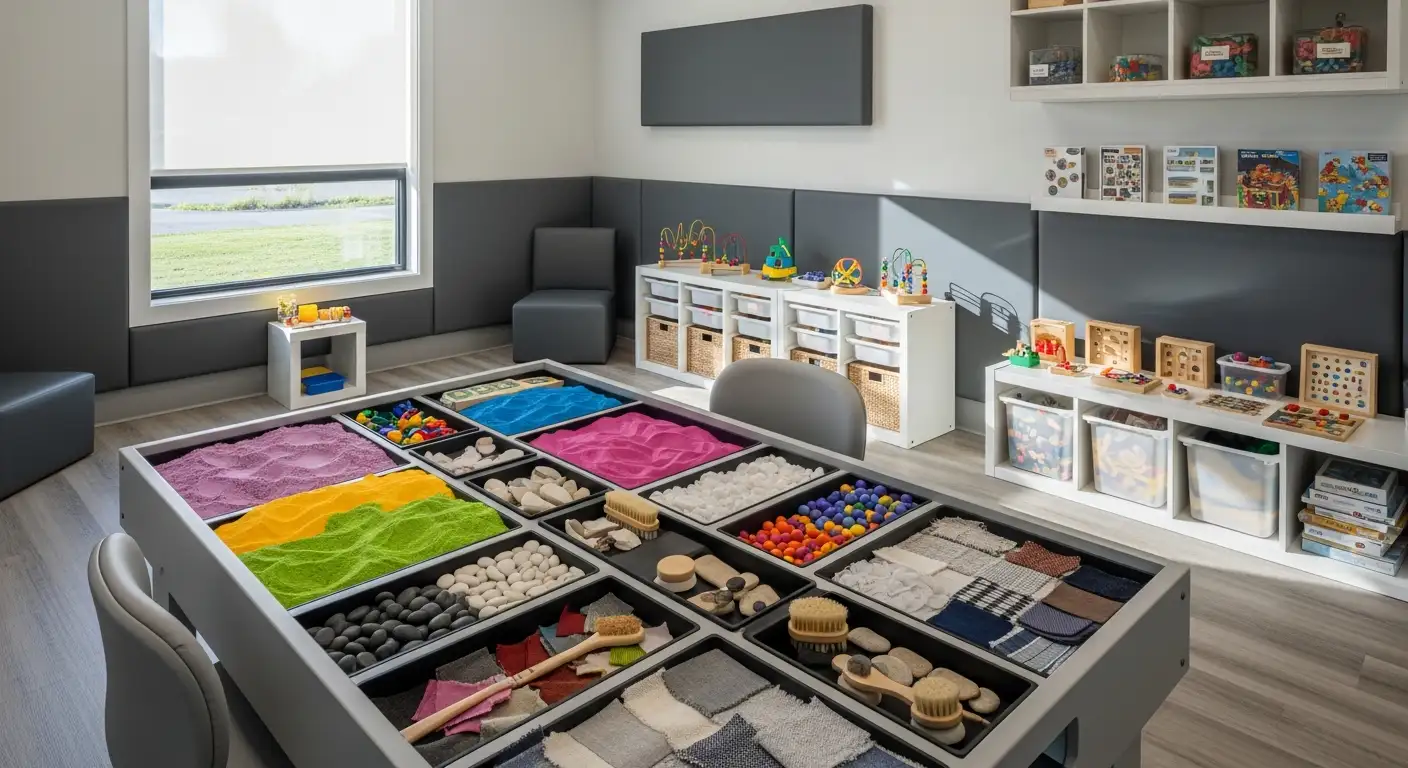Understanding the Unique Needs of Autistic Patients in Hospitals
Hospital stays can be particularly challenging for children with autism spectrum disorder (ASD) due to sensory sensitivities, communication difficulties, and disrupted routines. Providing tailored support, environmental modifications, and effective communication strategies are essential to creating a more welcoming and less stressful hospital experience. This article explores best practices, preparation techniques, sensory accommodations, and healthcare provider resources to ensure that children with autism receive compassionate and individualized care during hospitalization.
Partnering with Families and Caregivers for Better Support
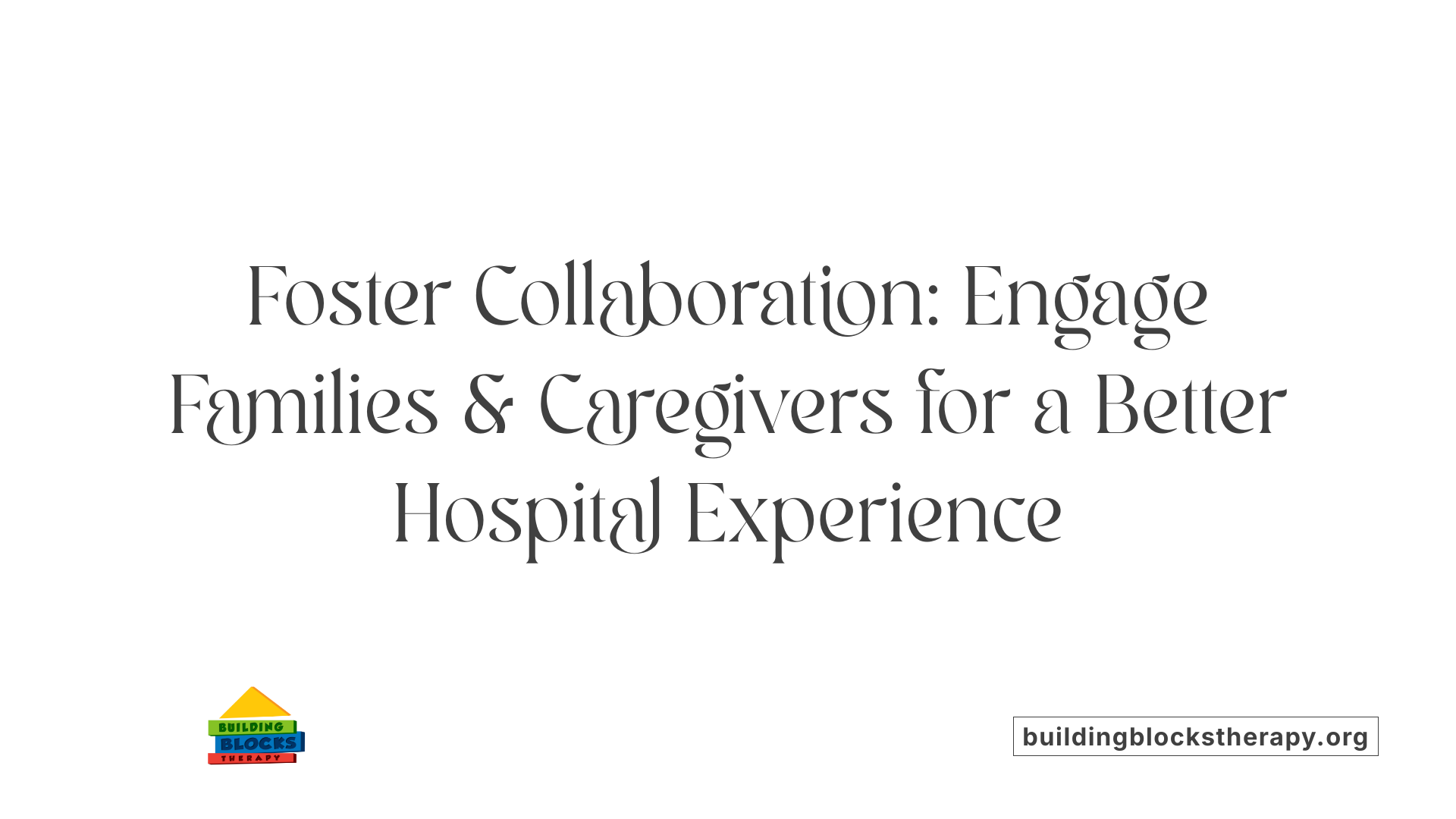 Supporting families and caregivers plays a vital role in ensuring a positive hospital experience for children with autism. Engaging families in care planning allows for personalized strategies that respect the child's unique needs, preferences, and sensitivities. Utilizing resources like the 'All About Me' information sheet helps hospital staff understand critical details about the child's communication styles, sensory triggers, and comfort items, enabling them to adapt care appropriately.
Supporting families and caregivers plays a vital role in ensuring a positive hospital experience for children with autism. Engaging families in care planning allows for personalized strategies that respect the child's unique needs, preferences, and sensitivities. Utilizing resources like the 'All About Me' information sheet helps hospital staff understand critical details about the child's communication styles, sensory triggers, and comfort items, enabling them to adapt care appropriately.
Clear and consistent communication is essential. When families and caregivers share detailed information about their child's behaviors, routines, and effective calming techniques, healthcare providers can tailor interventions to reduce stress and prevent behavioral escalations. These collaborative efforts foster trust and empower families to participate actively in their child's care.
Emotional and practical support for caregivers is equally important. Providing access to support groups, specialized Child Life Services, and guidance on preparing the child for hospital procedures can ease anxiety. Creating a welcoming environment with amenities designed for inclusivity, along with culturally sensitive care, helps families feel acknowledged and comfortable.
Hospitals can also promote caregiver well-being by encouraging self-care practices, such as taking brief breaks, practicing relaxation strategies, and maintaining communication with loved ones. Recognizing that caregivers often experience emotional exhaustion, these approaches ensure they are supported and able to focus on their child's needs.
In sum, fostering a partnership that values open communication, personalized care, and caregiver support leads to better outcomes and more positive hospital experiences for children with autism. This collaborative approach not only enhances the child's comfort but also strengthens the family’s confidence and trust in healthcare providers.
Practical Preparation Strategies for Hospitalized Children with Autism
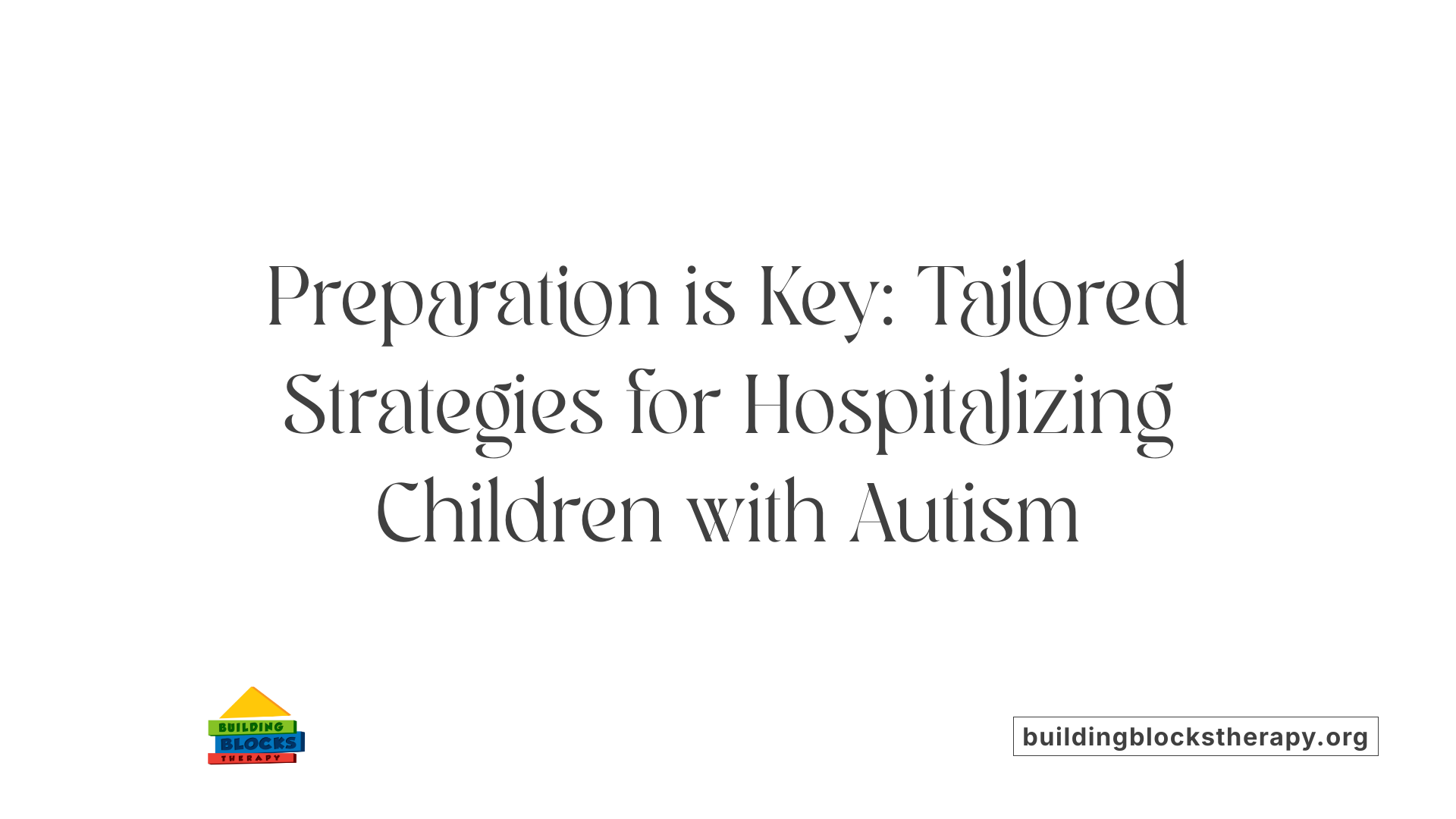
What practical tips can help prepare children with autism for hospitalization?
Preparing a child with autism for a hospital stay requires thoughtful planning and collaboration. One of the most effective methods is creating an individualized autism care plan. This plan should be filled out by parents or caregivers and include details about the child’s communication style, sensory sensitivities, routines, triggers, and preferred comfort items. By having this information readily available, hospital staff can tailor their approach to better support the child's unique needs.
Familiarizing the child with the hospital environment can make the experience less intimidating. Techniques such as visits beforehand, social stories, visual schedules, and role-playing medical procedures help build familiarity and reduce fear. Using social stories—simple, visual narratives that explain what to expect—can prepare children for different procedures or routine activities.
Bringing comfort items from home, such as favorite toys, photos, snacks, or sensory tools, can create a sense of security within unfamiliar surroundings. These familiar objects help calm anxiety and provide tactile comfort during stressful moments.
Effective communication with hospital staff is crucial. Parents should discuss their child's specific needs in advance and request support services, like child life specialists, who can provide preparation, distraction activities, and emotional support. Advocating for family presence during procedures, when appropriate, also helps keep the child comforted and reduces distress.
Consistent routines and clear visual cues can significantly help manage expectations and provide reassurance. By combining these strategies—detailed planning, familiarization, supportive communication, and comfort items—parents and caregivers can help children with autism navigate hospital stays more smoothly and with less anxiety.
Effective Communication Methods During Medical Procedures
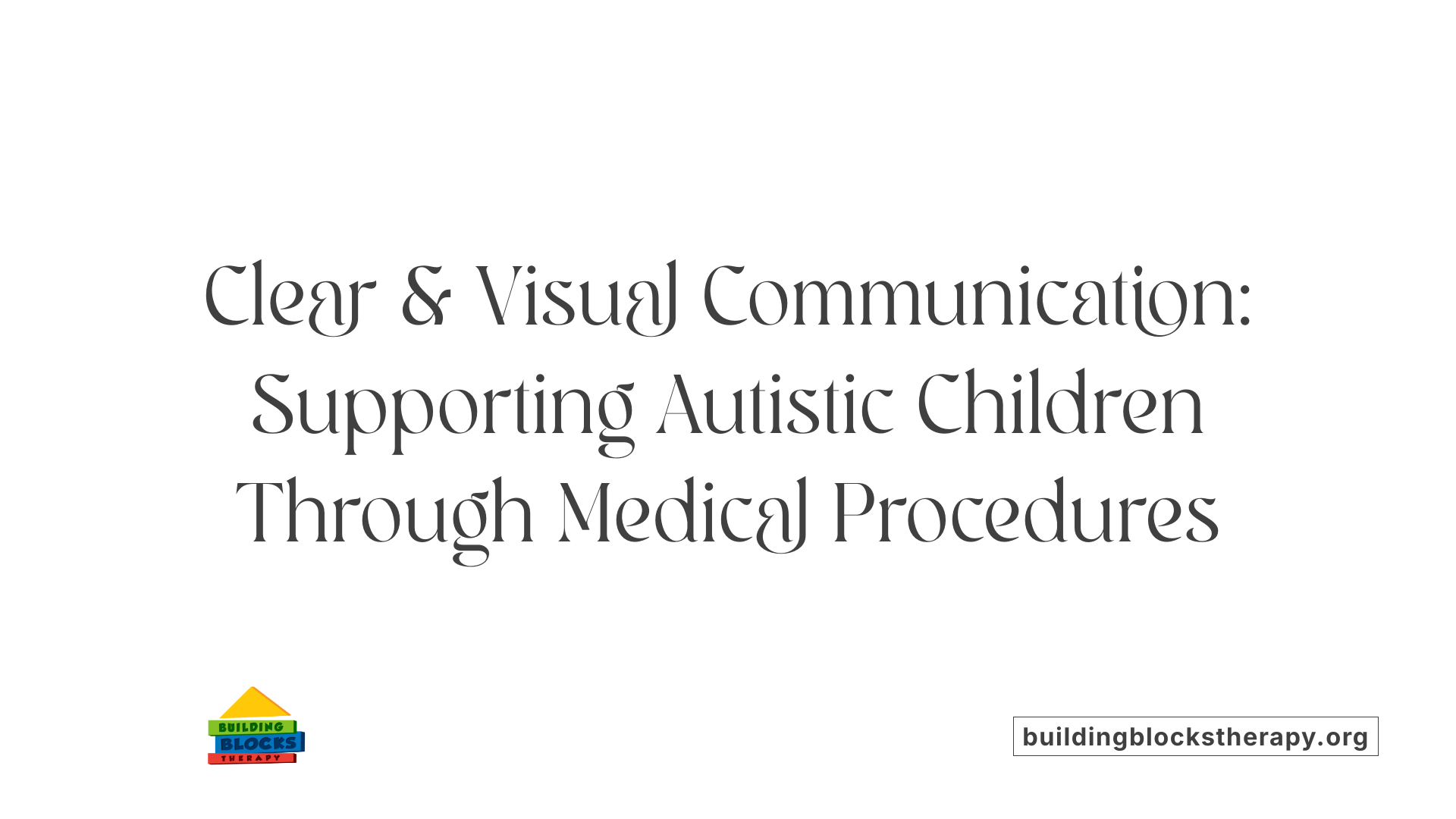 When caring for children with autism during medical procedures, effective communication is crucial to minimize distress and build trust.
When caring for children with autism during medical procedures, effective communication is crucial to minimize distress and build trust.
One of the most helpful tools is the use of visual supports. These include picture schedules, visual cues, and symbols that depict each step of the procedure. Visual supports provide predictability, helping children understand what to expect, which reduces anxiety. For example, showing a picture of a doctor, the medical tools, and the procedure process allows children to anticipate upcoming events and feel more in control.
Social stories are another effective technique. These are short, personalized stories that explain medical procedures in simple language, often accompanied by pictures. They help children understand what will happen, why it is necessary, and how they can respond. Reading social stories beforehand allows children to process information at their own pace, easing fears about unfamiliar procedures.
Clear and simple language is essential. Healthcare professionals should avoid medical jargon and use straightforward, concise instructions. For instance, instead of saying "We're going to perform an infusion," a nurse might say, "I will put medicine into your arm with a small needle. It might feel a little pinch." Repeating key information and giving extra processing time allows the child to better understand and respond.
Training healthcare professionals in autism-specific communication strategies enhances their ability to interact effectively. This includes techniques such as clarification—checking if the child understands—and repair—rephrasing or adjusting explanations if the child appears confused. It also involves individualizing communication styles to suit each child's sensory and cognitive needs.
Addressing sensory sensitivities by creating a sensory-friendly environment can make communication exchanges smoother. Reducing environmental noise, dimming bright lights, and offering familiar objects can help the child stay calm and focused.
Partnering with parents is vital. They can provide insights into the child's preferred communication methods and cues. Using multiple modes of communication—such as gestures, verbal cues, and visual aids—ensures the child receives messages in ways that they can best understand.
In summary, combining visual supports, social stories, simple language, trained staff, and sensory accommodations creates an effective communication framework for supporting autistic children through medical procedures. These strategies help reduce fear, enhance cooperation, and foster a more positive hospital experience.
Supporting Children with Autism During Hospital Stays: Practical Guidelines for Healthcare Providers
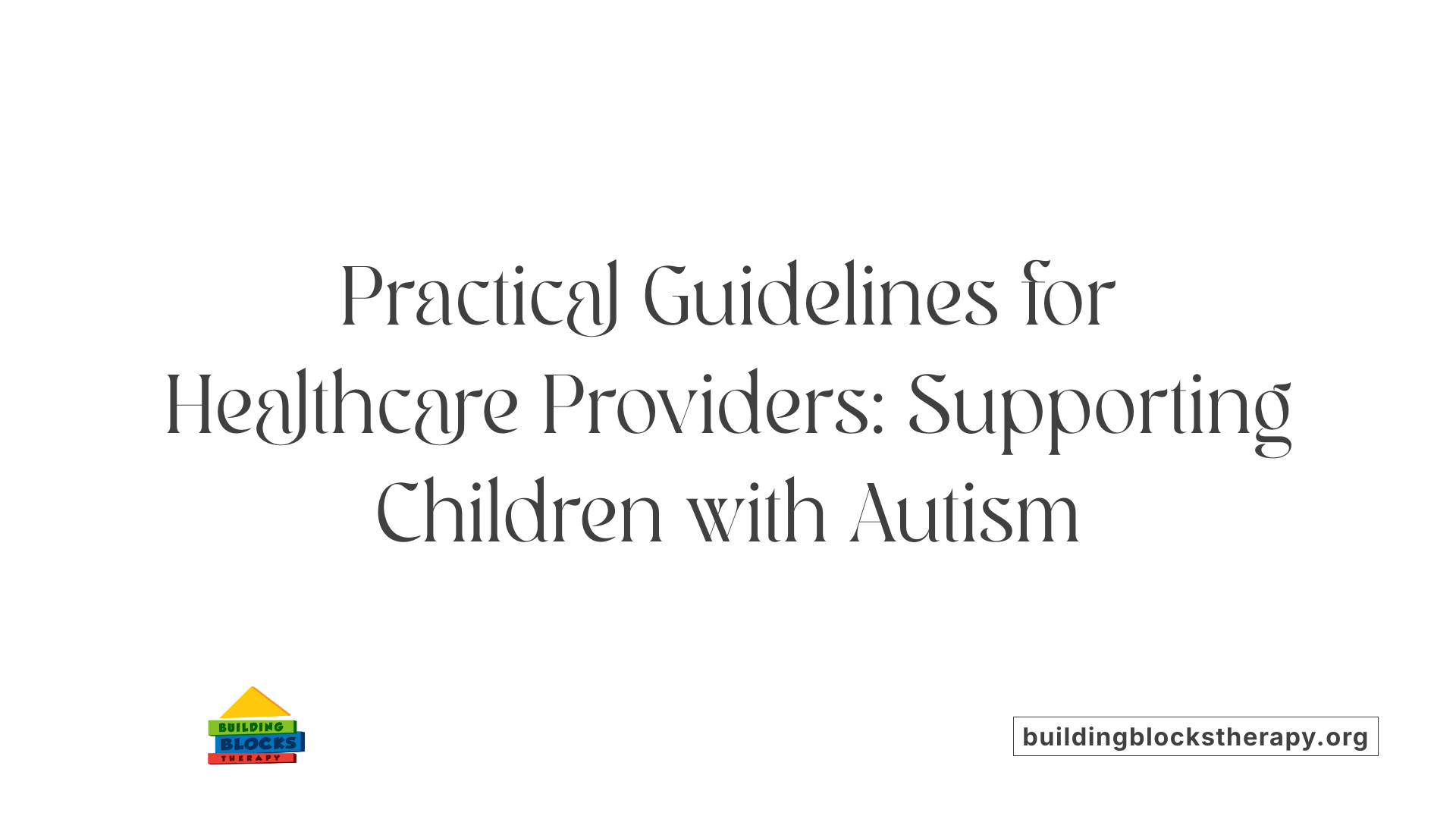
How should healthcare providers support children with autism during hospital stays?
Supporting children with autism during hospital stays requires a thoughtful and individualized approach. Healthcare providers should begin by developing personalized autism care plans, often referred to as Autism Care Plans (ACPs), which include detailed information provided by parents about the child's communication style, sensory sensitivities, favorite items, and specific triggers. These plans should be added to the child's electronic medical record to ensure all staff can access and follow them.
Partnering with parents or caregivers is essential, as they possess valuable insights into what helps their child feel safe and comfortable. Utilizing tools like 'All About Me' sheets allows staff to quickly learn about each child's unique needs, preferences, and sensitivities. Creating a predictable environment with visual schedules, social stories, and sensory-friendly modifications can significantly reduce stress and overstimulation.
Environmental adjustments include reducing noise levels, dimming lights, and providing sensory items like noise-canceling headphones or fidget toys. Offering a private, single room can also help manage sensory overload.
Pre-visit preparations such as social stories and familiarization with medical equipment can help children understand what to expect, decreasing anxiety. Visual and auditory aids, along with relaxation techniques, support sensory regulation.
Training staff in autism awareness and communication techniques ensures respectful and effective interactions. Consistency in staff presence and care routines fosters trust and comfort.
Overall, a collaborative, personalized approach that includes preparation, environment modification, and staff education helps improve safety, reduce distress, and optimize the hospital experience for children with autism.
Creating Less Stressful Hospital Experiences for Autistic Patients
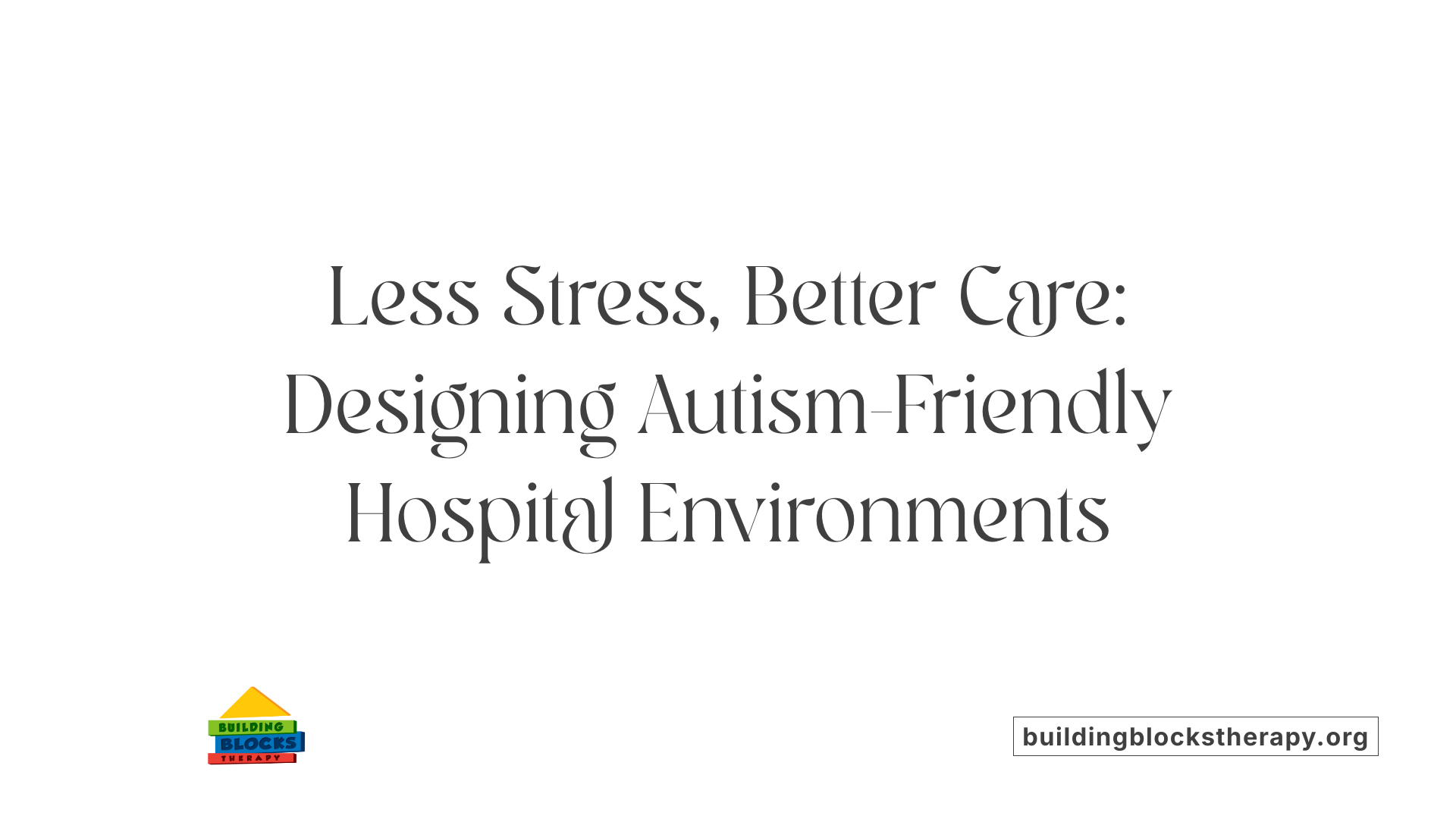
How can hospitals create less stressful experiences for autistic individuals during medical care?
Hospitals can significantly improve the experience for autistic patients by designing environments that minimize sensory overload. This includes adjusting lighting to softer levels, reducing loud noises, and providing calming spaces where patients can retreat if feeling overwhelmed. Environmental modifications, like using dim lighting, soundproofing, and sensory-friendly room accessories, create a more welcoming atmosphere.
Effective communication is essential. Visual supports such as picture schedules, social stories, and visual aids help explain procedures and routines clearly, reducing uncertainty and anxiety. Offering familiar items from home, such as toys or comfort objects, and using simple, direct language can also support understanding.
Staff training plays a critical role. Healthcare providers who are educated about autism acceptance and sensory sensitivities are better equipped to provide respectful, tailored care. Training includes recognizing signs of distress, using de-escalation techniques, and respecting the individual’s sensory needs.
Personalized accommodations further enhance comfort. Flexible scheduling, the option for a single room, and alternatives to invasive procedures where possible help reduce stress. Tools like hospital passports, sensory kits, and visual schedules serve as valuable supports, making hospital visits more predictable and manageable.
Overall, an inclusive, collaborative approach that considers environmental, communicative, and systemic adjustments can create a more positive healthcare experience. Partnering with families and applying individualized plans ensure that each child’s specific needs are addressed, leading to better outcomes and less stress during medical care.
Sensory Considerations and Accommodations in Hospitals
What sensory considerations and accommodations can hospitals implement for autistic patients?
Hospitals can enhance their environment by making sensory adjustments that cater to the needs of autistic patients. Creating calming, sensory-friendly spaces involves reducing harsh lighting, minimizing loud noises, and providing accessible sensory tools such as weighted blankets, fidget toys, and textured materials. Designated quiet areas and sensory rooms offer safe places for patients to retreat and regroup if sensory overload occurs.
Staff training on autism awareness is vital. Well-informed staff can better understand sensory sensitivities and communicate effectively using visual supports, social stories, and straightforward instructions. This knowledge helps in reducing anxiety and making procedures less intimidating.
Personalized sensory plans are crucial. These plans, developed in collaboration with families, include specific accommodations like flexible scheduling, longer appointment times, and tailored sensory tools. By involving caregivers early, hospitals can ensure care strategies are customized, thus supporting each child's individual sensory profile.
Implementing these accommodations not only improves comfort but also promotes safety, cooperation, and a more positive hospital experience for children with ASD.
Training and Resources for Healthcare Providers on Autism Support
Supporting children with autism spectrum disorder (ASD) in hospital settings requires specialized knowledge and skills. To enhance their ability to provide autism-friendly care, healthcare providers have access to a range of training programs and resources.
One notable program is the World Health Organization's Caregiver Skills Training (CST), which offers evidence-based, practical strategies for supporting children's development and managing challenging behaviors. These modules are often available online as free, self-paced courses, making them accessible to a wide range of professionals.
In addition to CST, resources like Autism Focused Intervention Resources and Modules (AFIRM) and Autism Internet Modules provide comprehensive, step-by-step guidance on implementing interventions grounded in research. These tools help clinicians learn how to adapt communication, sensory accommodations, and behavior management techniques suitable for children with ASD.
Clinical assessment tools are also essential, allowing teams to understand each child's baseline behaviors, sensory sensitivities, and communication preferences. Reputable institutions such as Harvard Medical School, the University of Minnesota, and Children's Mercy offer training on the use and interpretation of these assessments.
Continuing education opportunities—through workshops, webinars, and seminars—are vital for keeping healthcare staff updated on evolving best practices. Many organizations advocate for ongoing training to foster understanding of autism as a spectrum and promote consistent, person-centered care.
Overall, these diverse educational resources aim to equip healthcare professionals with the necessary expertise to create a supportive, safe environment for children with autism during hospital stays. By investing in specialized training, hospitals can improve outcomes, increase family satisfaction, and reduce pandemic-related stress for young patients.
| Program/Resource | Focus Area | Delivery Method | Provider/Organization |
|---|---|---|---|
| WHO's Caregiver Skills Training | Behavioral management, family engagement | Online modules, self-paced | World Health Organization |
| AFIRM | Evidence-based intervention techniques | Online, multimedia | University of Minnesota |
| Autism Internet Modules | Practical strategies, sensory supports | Web-based | Kennedy Krieger Institute |
| Clinical Assessment Tools | Diagnosis, baseline behavior | Hands-on training, workshops | Harvard Medical School |
| Continuing Education Courses | Updated skills, best practices | Seminars, webinars | Various professional bodies |
The Impact of Individualized Care Plans on Hospital Experiences for Autistic Children
How can individualized care plans improve hospital experiences for autistic children?
Creating personalized care strategies is crucial in providing effective hospital support for children with autism. These plans are tailored to each child's specific sensory sensitivities, communication styles, and behavioral needs, making the hospital environment more comfortable and less overwhelming.
The development process involves detailed assessments with input from families and caregivers, ensuring the plan captures the child's unique conditions, developmental stage, and personal preferences. This collaborative approach helps identify what strategies will work best for the child during their stay.
Incorporating sensory tools like noise-canceling headphones, visual aids, and visual schedules can reduce anxiety by providing predictability and familiarity. Visual cues, such as picture stories and social stories, help children understand medical procedures and daily routines, easing fears and promoting cooperation.
Staff training focused on ASD-specific needs plays a pivotal role. When healthcare providers understand the sensory sensitivities and communication challenges of children with autism, they can offer more respectful, empathetic care.
Multidisciplinary teams—comprising medical staff, psychologists, child life specialists, and family members—work together to implement these individualized plans, ensuring consistency and comprehensive support.
The benefits of such tailored approaches extend beyond immediate comfort. They lead to safer hospital stays, reduce emotional distress, and improve overall satisfaction for children and their families.
Ultimately, individualized care plans create a hospital environment that respects the child's unique needs, fostering a positive experience and better health outcomes.
Summary and Best Practices for Autism-Friendly Hospital Care
What are the best practices and evidence-based approaches for autism-friendly hospital care?
Providing effective and compassionate care for children and adults with autism spectrum disorder (ASD) during hospital stays requires a combination of tailored strategies and systemic adaptations. One of the most important steps is to modify the hospital environment to be sensory-friendly. This can include creating quiet spaces, reducing bright lights and loud noises, and providing sensory tools or kits. Such modifications help minimize sensory overload, which is common among autistic individuals.
Personalized communication plays a vital role in reducing anxiety and improving cooperation. Using visual supports like picture schedules, social stories, and assistive technologies can help clarify procedures and expectations. Clear, concise verbal communication paired with calm and reassuring tones are also beneficial.
Staff education is critical. Hospitals should prioritize comprehensive training on autism awareness, including understanding sensory sensitivities, communication differences, and behavioral strategies. Ongoing education through workshops and seminars enhances staff confidence and ensures consistent, respectful care.
Implementing individualized care plans based on early assessment and involving family members facilitates continuity and adherence to the patient’s unique needs. Tools such as hospital passports or structured reports like the Autism Care Questionnaire inform staff of preferences, sensitivities, and safety concerns.
Support systems such as dedicated sensory rooms, flexible scheduling, and family-centered care approaches further improve the hospital experience. Collaboration among healthcare providers, families, and specialists ensures interventions are multidisciplinary, addressing both medical and psychosocial aspects.
Adopting these practices, grounded in evidence-based research, not only enhances safety and comfort for autistic patients but also increases family satisfaction and overall care quality in hospital settings.
Fostering Inclusive and Supportive Hospital Environments
Supporting children with autism during hospital stays requires a comprehensive, compassionate approach that includes preparation, environmental modifications, effective communication, staff training, and personalized care plans. Collaborating closely with families, emphasizing sensory considerations, and employing evidence-based practices can significantly reduce stress and improve healthcare experiences. By creating inclusive and adaptable hospital environments, healthcare providers can ensure that autistic children feel safe, respected, and understood, ultimately promoting better health outcomes and family satisfaction.
References
- Autism and hospital visits
- Valuable Ways to Prepare Your Child with Autism for a Hospital Stay
- [PDF] Best Practices for Hospitalized Pediatric Patients with Autism ...
- Meeting the Needs of Children With Autism Spectrum Disorder and ...
- ATN@Work: Personalizing hospital care for children with autism
- Medical Encounters for Youth With Autism Spectrum Disorder
- Providing Inpatient Medical Care to Children With Autism Spectrum ...
- Autistic patients' experiences of the hospital setting: A scoping review

